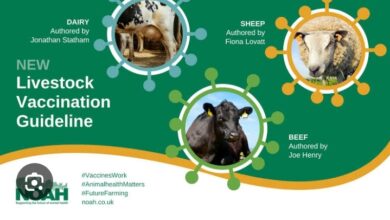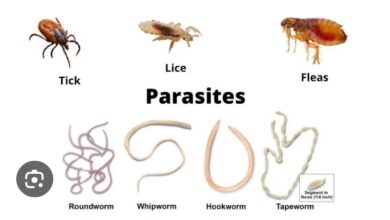A Step by Step Guide on Controlling Canine Distemper On Animals:

Let’s Study More overview of canine distemper:
Etiology and Virology of Canine distemper
Canine distemper is caused by the canine distemper virus (CDV), a highly contagious virus that is part of the Morbillivirus genus within the Paramyxoviridae family.
This virus is closely related to other morbilliviruses, such as the measles virus in humans, rinderpest virus in cattle, and phocine distemper virus in seals. These viruses all share similar structural characteristics, such as a single-stranded RNA genome and an outer membrane with viral glycoproteins that allow them to infect cells.
The canine distemper virus is primarily airborne, meaning it spreads easily through respiratory droplets when an infected animal coughs, sneezes, or exhales.
It also can spread through direct contact with bodily fluids like saliva, nasal discharge, and urine. or by coming into contact with contaminated objects such as bedding, toys, or food and water bowls
The virus is able to survive in the environment for a certain period, particularly in cool, moist conditions, which further aids in its transmission.
Cellular Mechanism of Infection
The Canine distemper virus enters the body through the mucous membranes of the respiratory tract (nose, mouth, or eyes) It
nitially infects lymphoid tissues (such as lymph nodes and spleen), where it begins to replicate. The virus targets immune cells, particularly T-cells and B-cells, which weaken the immune system’s ability to fight off secondary infections. The disease virus then spreads to various other tissues in the body, including the lungs, gastrointestinal tract, and nervous system, causing widespread damage.
CDV’s ability to impair the immune system is one reason why dogs affected by distemper. highly susceptible to secondary bacterial and viral infections, which can lead to pneumonia, gastrointestinal infections, and other complications.

Canine Distemper in Different Species
While canine distemper primarily affects dogs, it is a zoonotic virus,
Meaning it can infect various other species, especially other carnivores. These include:
- Foxes and wolves: Canine distemper has been responsible for large die-offs in wild fox and wolf populations.
- Raccoons: Raccoons can carry the disease and can spread it to domestic pets. Often causing neurological damage similar to that seen in dogs.
- Ferrets: Like dogs, ferrets are highly susceptible to canine distemper, and the virus can cause severe neurological symptoms and death.
- Big cats (lions, tigers, etc.): Infected animals in zoos have been affected, showing respiratory and neurological symptoms.
Some animals, such as cats, are generally not susceptible to canine distemper but may carry related viruses (such as feline distemper)
That cause similar symptoms in their species.
Transmission in a Community or Shelter Setting
Canine distemper is especially concerning in environments where many animals live in close quarters.
Such as animal shelters, breeding facilities, rescue organizations, and zoos. This is because the virus spreads so quickly and can be introduced to a facility through a single infected animal. In these situations:
- Isolation of infected animals becomes crucial to prevent a large-scale outbreak.
- Quarantine measures may need to be enacted for animals that show symptoms.
- Strict hygiene protocols must be followed to minimize viral spread.
This is why shelters and rescues emphasize vaccination for all incoming animals to prevent an outbreak.

Pathophysiology: The Effects on Different Systems
- Respiratory System:
- The virus initially infects the upper respiratory tract, leading to symptoms like nasal discharge, coughing, and sneezing.
- Secondary bacterial infections, such as pneumonia, can occur due to the weakened immune system, which complicates recovery.
- Pulmonary damage can result from inflammation and infection, making it harder for affected dogs to breathe, and may lead to respiratory failure in severe cases.
- Gastrointestinal System:
- The virus can affect the gastrointestinal tract, leading to symptoms such as vomiting, diarrhea, and dehydration.
- The gastrointestinal symptoms may contribute to the dog’s overall weakness and cause further strain on its immune system, making recovery more difficult.
- Nervous System:
- One of the hallmark features of canine distemper is the effect on the central nervous system (CNS), which can lead to a range of neurological symptoms:
- Seizures are common and often occur as the disease progresses.
- Tremors and muscle twitching (myoclonus) are other telltale signs of CNS involvement.
- Dogs can become ataxic, meaning they lose coordination and may stumble or fall over due to nerve damage.
- Progressive neurological deterioration can lead to permanent damage, including paralysis in the limbs.
- Encephalitis, or inflammation of the brain, can cause more severe mental confusion and aggression in some cases.
- “Old dog encephalitis” is a term for chronic distemper-induced brain inflammation that can occur months or even years after initial infection, leading to neurological decline.
- One of the hallmark features of canine distemper is the effect on the central nervous system (CNS), which can lead to a range of neurological symptoms:
- Immune System:
- The canine distemper virus actively targets and suppresses the immune system, leaving affected dogs vulnerable to secondary infections. This makes treatment more difficult, as infected dogs often suffer from co-infections with other pathogens like bacterial pneumonia or gastrointestinal infections.
Long-Term Effects of Canine Distemper
Even if a dog survives the acute phase of canine distemper, long-term complications are common, particularly when the virus has affected the neurological system. These include:
- Chronic seizures or tremors, which can sometimes require lifelong medication.
- Behavioral changes such as confusion, aggression, or difficulty with coordination.
- Permanent damage to the immune system, making the dog more susceptible to other infections and illnesses throughout its life.
- “Hard pad disease” (thickening of the footpads and nose) can persist, and while it may not be painful, it can cause permanent cosmetic changes.
Canine distemper Outbreaks and Epidemics
Canine distemper outbreaks can happen when a population of dogs (often puppies or unvaccinated adults)gets into contact. Or comes into contact with an infected animal or its bodily fluids. Outbreaks are more common in areas where the vaccination rate is low. And they tend to be more severe in shelters or rural areas where dogs may come into contact with wildlife carrying the virus.
In areas with wild dog populations (such as foxes or wolves), wildlife reservoirs can sustain distemper outbreaks. may spill over into domestic dogs. Some regions may even experience epidemics where large groups of animals become infected and are at high risk of mortality.

Veterinary Management and Supportive Care for canine distemper
Since canine distemper has no specific antiviral treatment, veterinary management focuses primarily on supportive care. This helps to alleviate symptoms and prevent secondary infections. Key aspects of care include:
- Fluid therapy to prevent dehydration and manage electrolyte imbalances caused by vomiting and diarrhea.
- Antibiotic therapy to prevent or treat secondary bacterial infections, especially respiratory and gastrointestinal infections.
- Anticonvulsants to manage seizures (e.g., phenobarbital or diazepam).
- Nutritional support: Dogs with distemper often experience poor appetite and weight loss, so feeding tubes or easily digestible food may be necessary.
- Respiratory care: If pneumonia is present, supplemental oxygen or nebulization therapy may be required.
- Pain management to alleviate discomfort from neurological damage or secondary infections.
In addition to these treatments, the dog’s overall quality of life and prognosis should be closely monitored. If the dog’s neurological symptoms are severe and unresponsive to treatment, euthanasia may be considered to prevent further suffering.
Canine distemper Prevention: Vaccination and Public Health
Vaccination is by far the most effective way to prevent canine distemper. Most puppies receive the DHPP vaccine (distemper, hepatitis, parvovirus, and parainfluenza) as part of their early vaccination series, which is administered at 6, 9, and 12 weeks of age, with a booster given at one year and subsequent boosters every one to three years depending on the dog’s health and the guidelines provided by the vet.
- Puppy socialization should be done only after they’ve received a full set of vaccinations to ensure they are protected from exposure to contagious diseases like distemper.
- Vaccinating adult dogs is important to maintain immunity, especially if they are in high-risk environments, such as boarding kennels or shelters.
- Quarantining sick animals and avoiding contact with unvaccinated dogs are vital measures in preventing outbreaks, especially in animal shelters.
Public health efforts, especially in wildlife management, also aim to monitor and control canine distemper outbreaks in wild populations of carnivores that might act as a reservoir for the virus. This reduces the likelihood of transmission to domestic animals.
Read More About: External Parasites on Animals
Conclusion
Canine distemper remains one of the most significant infectious diseases that affect dogs worldwide. Despite its high mortality rate, especially in unvaccinated dogs, vaccination remains the most effective tool in preventing it. Early detection, supportive care, and strict control of exposure can help mitigate the effects of the disease. This will improve the chances of survival, but the best protection is always vaccination and prevention. With continued vigilance and education, distemper outbreaks can be minimized, and the health of canine populations can be better safeguarded.
Also Read About: Industrial Vacancies




